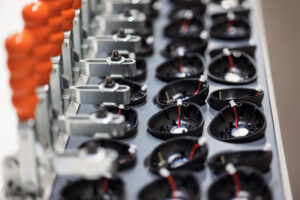Injection Molding: A Core Manufacturing Method for High-Quality, Scalable Production
Injection molding is one of the most widely used manufacturing processes across industries that require high-volume, precision-made plastic parts. From consumer electronics to automotive components, this method offers repeatability, efficiency, and cost-effectiveness that few other processes can match. For companies looking to streamline product development and scale production without compromising quality, injection molding is a logical choice. Whether integrated into electronics assembly or used in standalone component fabrication, injection molding plays a critical role in modern manufacturing.
What Is Injection Molding?
Injection molding is a manufacturing technique that involves injecting molten plastic material into a custom-designed mold. Once the material cools and solidifies, it takes the shape of the mold cavity, producing detailed and consistent parts. This process is particularly suited for producing complex shapes in large quantities with high precision. The process involves several key steps:
- Mold Design and Tooling – A steel or aluminum mold is created based on the specifications of the part.
- Material Injection – Thermoplastic or thermoset polymers are heated until molten, then injected into the mold at high pressure.
- Cooling and Ejection – The mold is cooled to allow the part to solidify before being ejected for finishing or assembly.
Why Injection Molding Is Ideal for Electronics Manufacturing
In the electronics industry, consistency and precision are paramount. Enclosures, connectors, housings, and insulation components must not only fit perfectly but also withstand mechanical and thermal stress. Injection molding allows for tight tolerances and repeatable quality, making it indispensable for electronics assembly applications.
Materials used in injection molding can be tailored for properties such as flame resistance, impact strength, or UV protection – essential for producing parts that protect sensitive electronic components. Additionally, overmolding techniques can be used to combine multiple materials in a single part, enhancing both function and aesthetics.
Scalability and Cost Efficiency
For high-volume production, injection molding is unmatched in efficiency. Once the tooling is created, the cost per unit decreases significantly as production scales. This makes the method particularly attractive for industries where thousands – or millions – of identical parts are required.
While initial mold fabrication can be costly, it is an investment that pays off quickly in mass production scenarios. Injection molding also enables quick cycle times and reduced labor costs, further improving overall manufacturing efficiency.
The Role of a Contract Manufacturer
Partnering with an experienced contract manufacturer that offers in-house injection molding capabilities ensures tighter integration of the manufacturing process. This reduces lead times, eliminates the need for multiple vendors, and supports a more agile supply chain.
When combined with additional services such as electronics assembly, CNC machining, or final product integration, injection molding becomes part of a comprehensive production solution. This streamlined approach enables companies to go from concept to finished product faster and more cost-effectively.
Partner with Artilux NMF for Injection Molding and More
Artilux NMF offers advanced injection molding, high-precision electronics assembly, and full-service solutions as a trusted contract manufacturer. With state-of-the-art equipment and a strong commitment to quality and sustainability, Artilux NMF helps businesses bring innovative, durable, and scalable products to market. Explore Artilux NMF’s manufacturing capabilities and discover a smarter way to produce.

